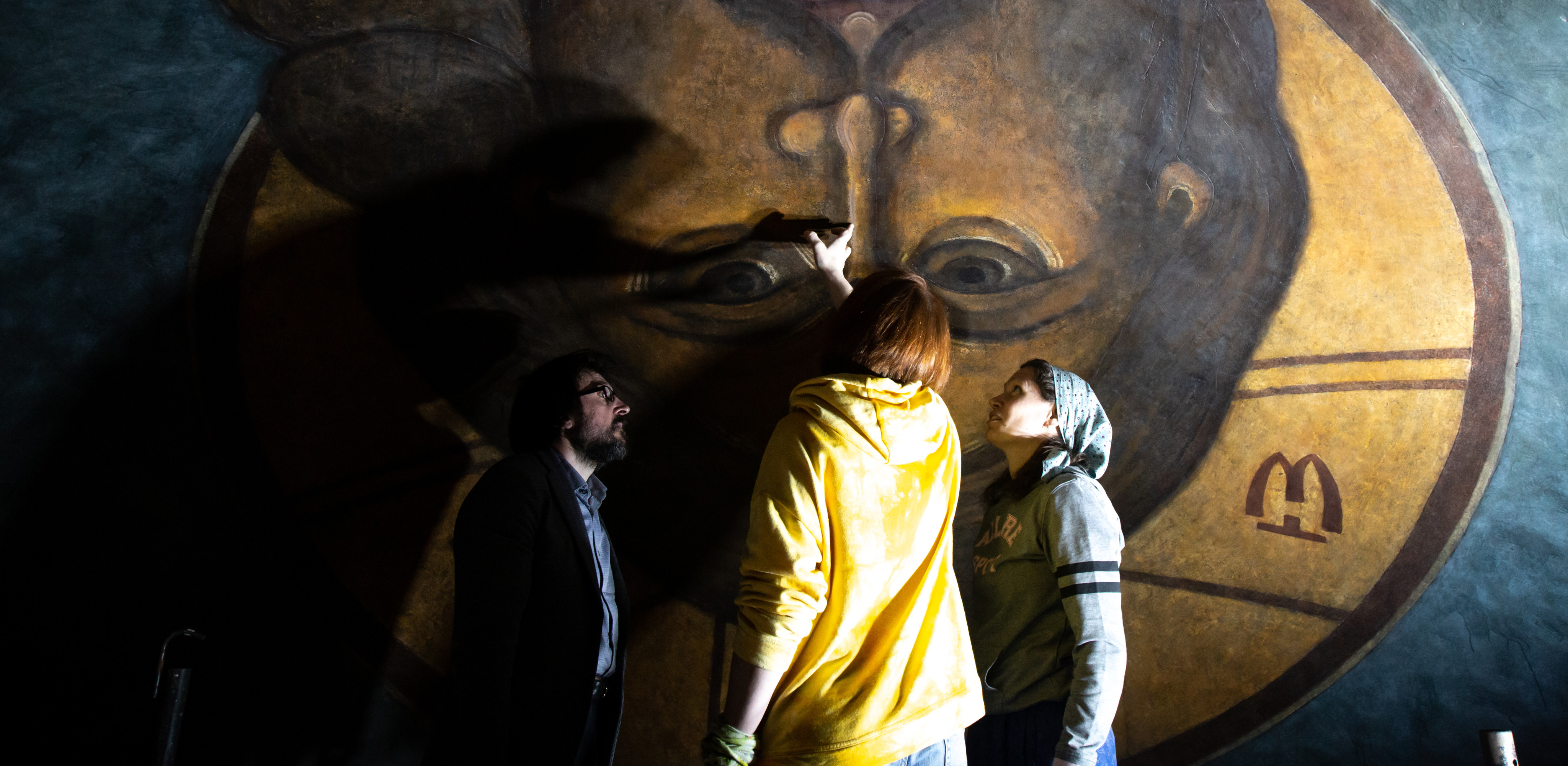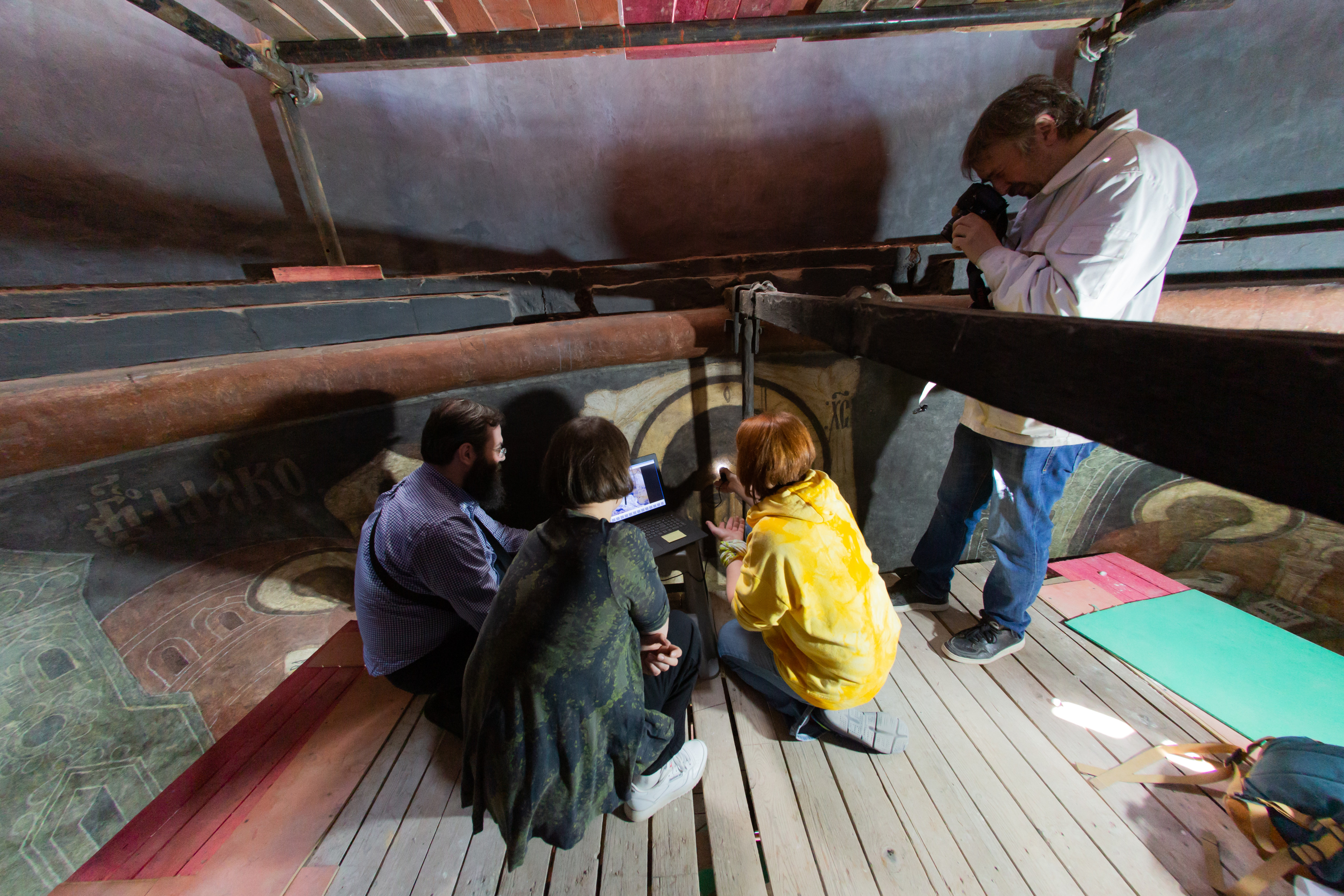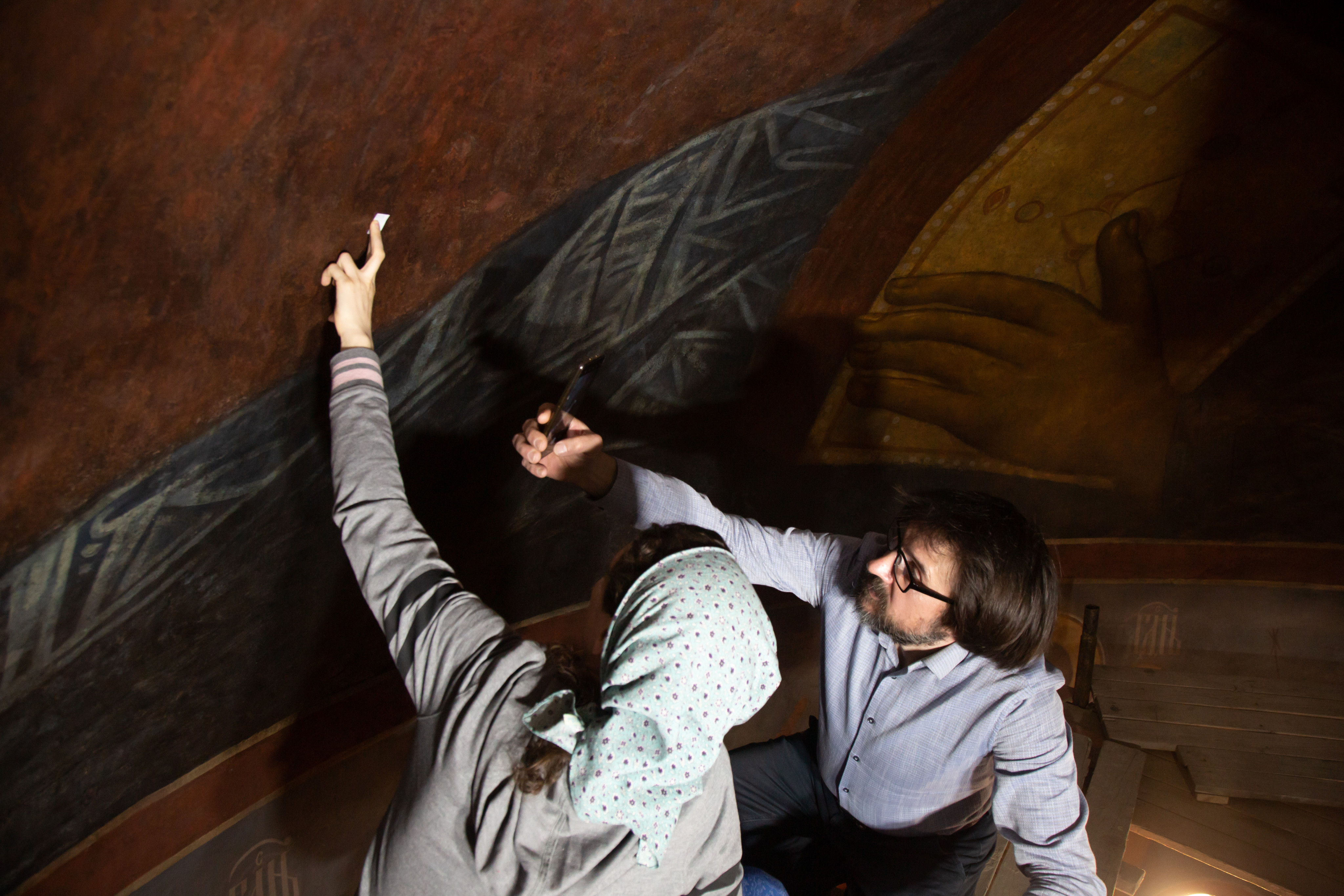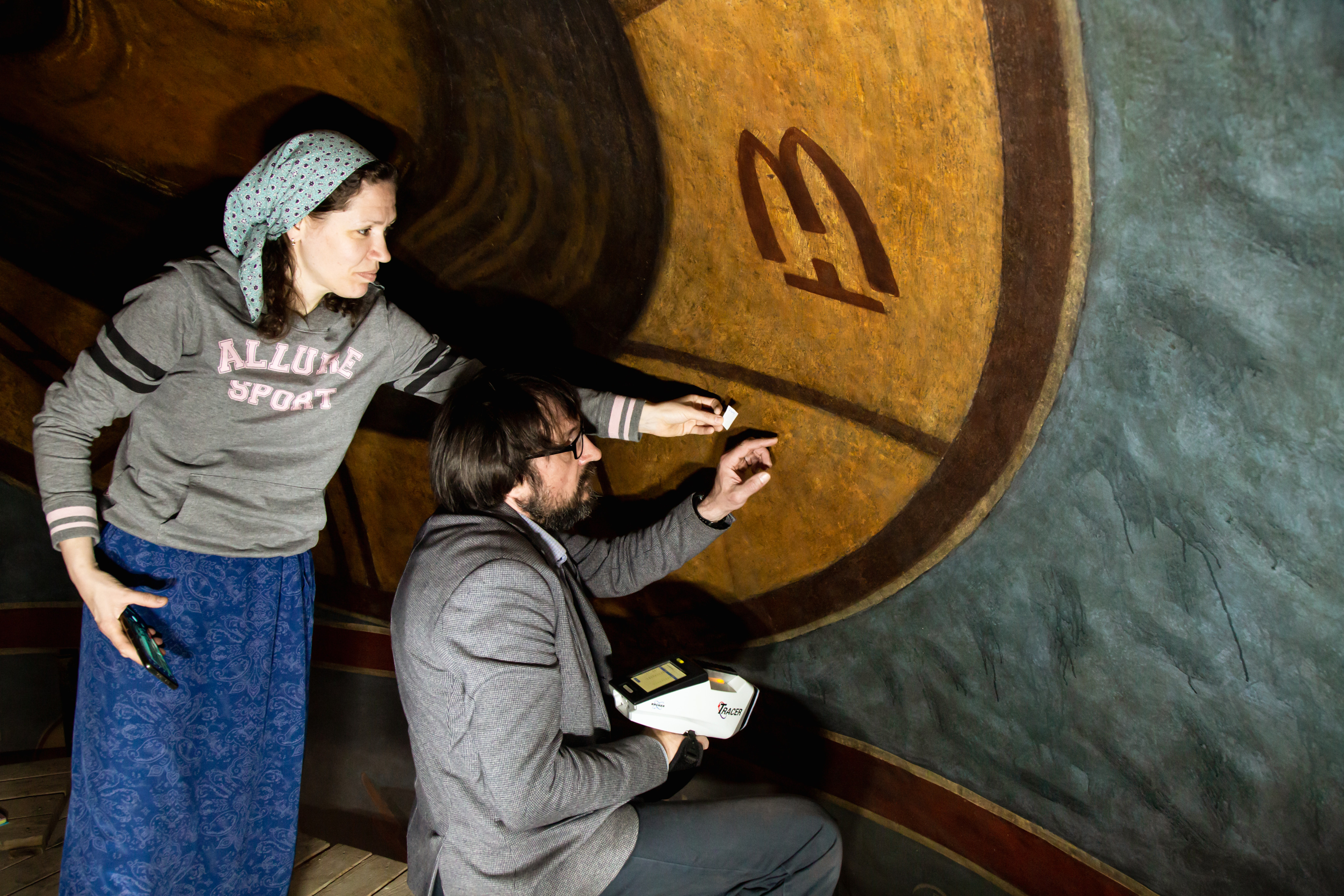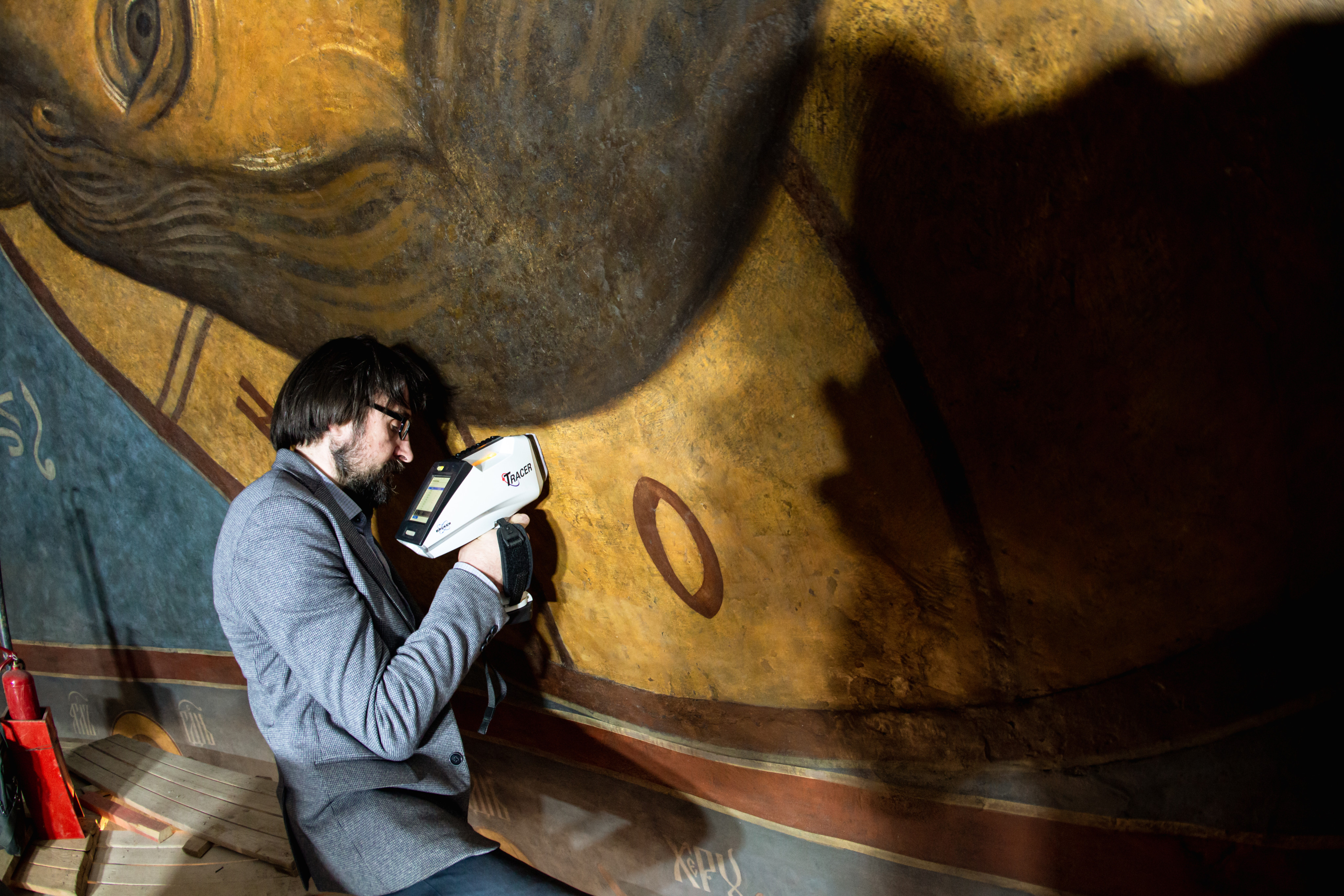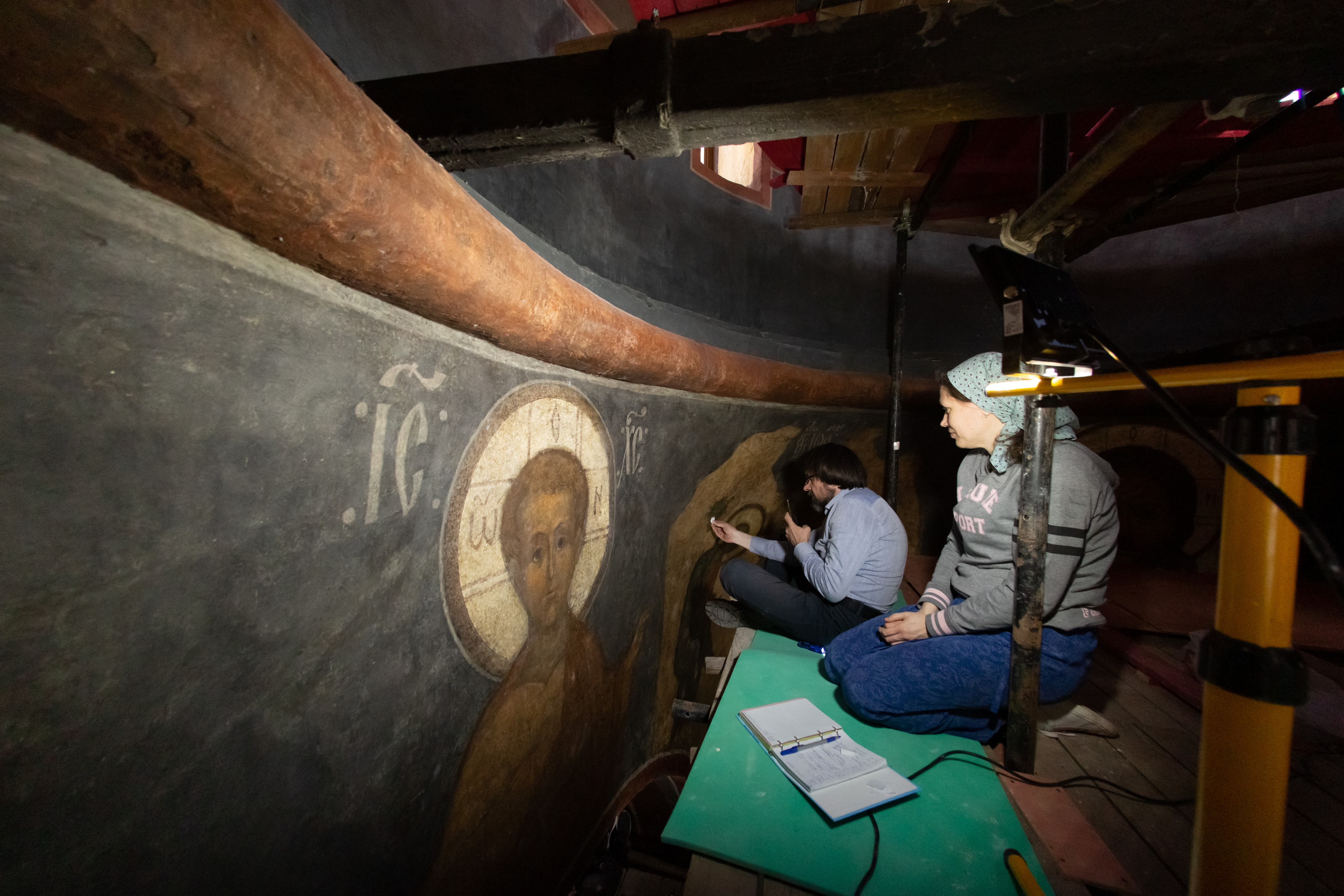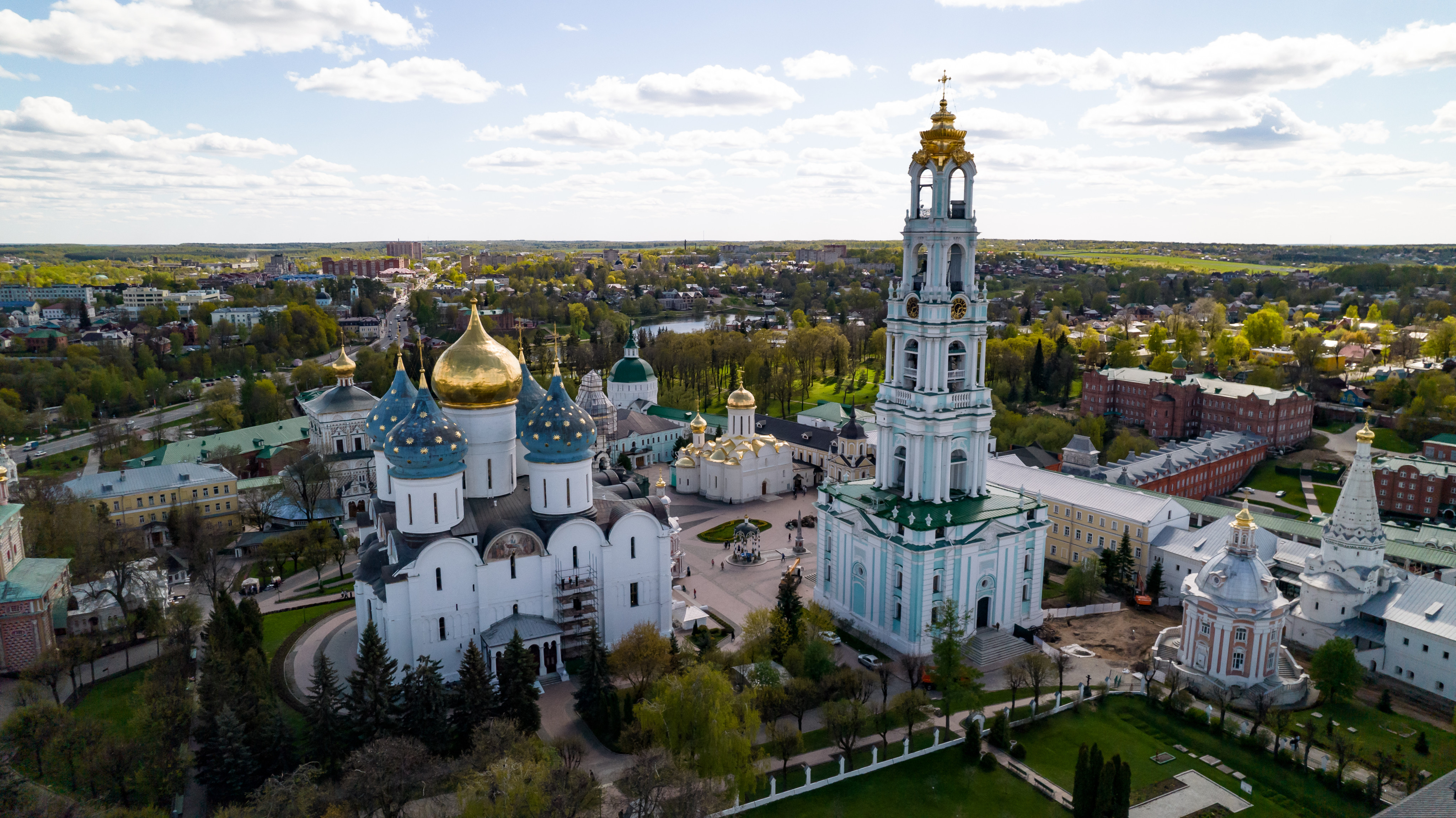JINR scientists study fresco painting in Trinity Sergius Lavra
News, 25 May 2022
Staff members of the FLNP JINR Group of Neutron Activation Analysis have started a new stage of works within the agreement with the Interregional Scientific and Restoration Art Department (MNRHU JSC). This time, the objects of their investigation are frescoes of the Trinity Cathedral of the Trinity Sergius Lavra in Sergiev Posad.
JINR has been cooperating with art historians and restorers for about three years now. During this time, employees of the FLNP Group have studied the wall paintings of the St. George Cathedral of the Yuriev Monastery (Veliky Novgorod, XII century), the Transfiguration Cathedral of the Mirozhsky Monastery (Pskov, XII century), and the Smolensk Cathedral of the Novodevichy Convent ( Moscow, XVI century). results of these studies have been highly appreciated by leading Russian art historians at the seminar organized by the State Institute for Art Studies of the Ministry of Culture of Russia at the beginning of 2022. The fourth ancient monument the frescoes of which are being studied by physicists is the Trinity Cathedral of the Trinity Sergius Lavra in Sergiev Posad.
The Trinity Cathedral is the main active church of the Trinity Sergius Lavra and at the same time the oldest building on its territory, built in 1422-1423. To date, restoration and conservation works are underway inside the Cathedral. Specialists remove surface contamination (soot) and later varnish, glue layers, as well as strengthen the plaster base. The lost areas of the wall painting are spot-tinted with watercolour paints.
On 20 May, after soot had been removed from the walls, employees of the Group Candidate of Chemistry Olga Filippova and Candidate of Physics and Mathematics Andrey Dmitriev started in situ studies. “We have conducted in situ non-destructive elemental analysis using a portable device for X-Ray fluorescent analysis, measured the spectra in more than 120 spots, including in the tholobate of the cathedral,” Olga Filippova said.
The molecular and mineral composition of frescoes will be studied by the infrared spectroscopy. It will allow determining and confirming the pigments and binders used for complete painting of the cathedral in XVII century and the renovation in XIX-XX centuries.
“JINR employees are studying pigment and plaster compositions in the Trinity Cathedral. We hope that the comparative analysis would confirm that the painting was made in XVII century,” the 1st category MNRHU JSC artist-restorer of the V. D. Sarabyanov crew Varvara Sergienya said. She noted that the Cathedral was originally painted by the great icon painter Andrei Rublev. However, those paintings were practically lost. The fresco that has survived was painted around 1635. Over the years, the painting have repeatedly been redrawn. In the XVIII century, it was again repainted with oil paints. It was repainted for several times in the XIX century, and some plots were changed. In the XX century, specialists started restoration studies.
“We are glad to cooperate with the Group and to have an opportunity to study deeply and comprehensively the chemical composition of paints of the monument. All previous works have been done quickly and efficiently. It delights us a lot. The awareness and scientific approach of the JINR staff are remarkable. Now our monuments will be studied in greater details than it was done before in the middle of the XX century,” the expert added.
